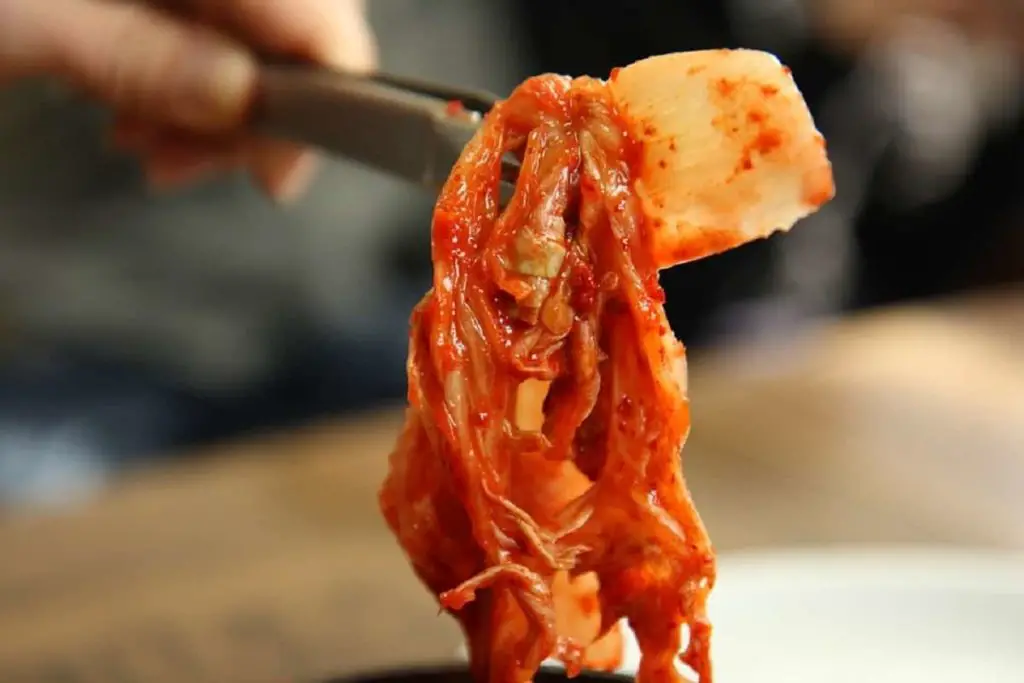If you’ve never tried much Korean food, kimchi might sound exotic (if you are Korean, though, it’s probably your bread and butter). However, once you get into the world of kimchi, you start realizing that there are endless uses for this condiment. Serve on its own as a side-dish? It works. Want to add it to a sandwich to freshen it up? No problem. Mix in a salad that’s your own creation (see also Can You Freeze Radishes)? Easy. Even soups and fried rice work with kimchi.
So, once you start using a lot of kimchi, you inevitably end up with more kimchi than you need. How can you store it? Before we talk about freezing kimchi (hint: it’s definitely doable), let’s take a minute to reflect on the origin of kimchi and the shelf life of this wonderful condiment.

The Shelf Life Of Kimchi
Kimchi is a staple of Korean cuisine, and according to some sources it has been around for more than 3000 years. Why has kimchi remained popular all these years? It’s because it’s actually a method for preserving vegetables (besides making them delicious).
Traditionally, kimchi was kept in large pots dug into the ground and used all through the winter. Kimchi was kept in the cold to slow the fermentation process (see also Can You Freeze Kefir?). When kept at room temperature, the process goes faster. Exposure to air can also alter the taste of kimchi. Does this mean the kimchi will go bad if kept outside the fridge? Not really, but it might change in flavour.
The only case when kimchi is inedible is when you notice mould growing on it (which rarely happens). Otherwise, it’s still edible, but perhaps not as tasty as it was. How do you preserve the flavour of kimchi over time? Well, by freezing it, of course.
How To Freeze Kimchi
No matter if your kimchi is homemade or store-bought, the rules of freezing it are pretty much the same.
The thing we should address first are the containers in which you keep kimchi. Kimchi is often kept in glass containers – mason jars, wide-mouthed bottles, you name it. It’s really the best way to keep kimchi in your pantry or fridge. However, it will not work for the freezer.
Glass containers can crack when frozen. While this usually doesn’t happen when you freeze dried goods, glass containers filled with liquid can easily crack. That’s because water expands when frozen, but glass doesn’t. If this happens, you not only end up with ruined kimchi, but also a mess of broken glass to clean up.
If your kimchi is in a glass container, you’ll need to transfer it to a freezer-safe container. You can use rigid plastic containers or freezer bags. Just gently scoop all of the kimchi into the container using a spoon and perhaps a rubber spatula if you have one laying around to help clean up the edges. If the edges of the container have some kimchi on them, clean them up with a clean kitchen towel or paper towel. Then, all you need to do is close the container, label it, and throw it into the freezer.
If you are using freezer bags, try to squeeze out as much air as possible before closing the bag. You can do this more easily if you fill the bag and close it almost to the end. Then, squeeze the air out through the small remaining hole and then close the bag completely. This will help prevent freezer burn and keep your kimchi looking fresh.

How To Defrost Kimchi
When defrosting kimchi, it’s best to take it out the day before and let it defrost in the fridge. For this reason, it’s also helpful if you freeze your kimchi in portion-sized parts so you can always pull out as much as you need.
Thawing in the fridge is really the best option, as kimchi doesn’t fair well when kept at room temperature for too long. Besides, kimchi is usually served cold so you can use it right out of the fridge.
On the other hand, if you are using kimchi for cooking, for example when making soups, the process is even easier. You can simply use kimchi right out of the freezer. The small pieces will thaw soon enough and it won’t mess up you cooking process too much.
